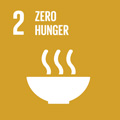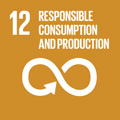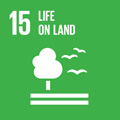- Docente: Giulia Tabanelli
- Credits: 6
- SSD: AGR/16
- Language: Italian
- Teaching Mode: Traditional lectures
- Campus: Bologna
- Corso: First cycle degree programme (L) in Animal Production (cod. 8882)
-
from Sep 16, 2024 to Nov 26, 2024
Learning outcomes
At the end of the course, the student knows the principles of microorganism biology and bacterial taxonomy and has elements of food microbiology. They know the role of microbial population in food of animal origin as well as the main fermentations at the basis of dairy and meat industries.
Course contents
Overview: Scope of microbiology, general definitions. What is a microorganism. General composition and functions of the microbial cell. Eukaryotic and prokaryotic cells
Cell Structure: Morphology of bacterial cells; cell wall, peptidoglycan. Gram staining: Gram-positive and Gram-negative bacteria; outer membrane and periplasmic space of Gram-negative bacteria. Plasma membrane; membrane proteins and fluidity. External layers. Motility structures. Cytoplasm. Ribosomes. Endospore production. Morphology of the eukaryotic cell. Cell wall, chloroplasts, mitochondria. Nucleus and chromosomes. Endoplasmic reticulum, Golgi apparatus.
Growth: Culture media: definition, classification, preparation. Microorganism counting. Microbial growth curve: lag phase, exponential phase, stationary phase, and death phase.
Main Factors Influencing Microbial Growth: Temperature, pH, water activity (aw), oxygen.
Nutrition and Transport Systems: Chemical components. Micronutrients. Energy (phototrophy, chemotrophy, lithotrophy). Organic substances (autotrophs, heterotrophs). Growth factors. Transport systems (primary, secondary, group translocation).
Microbial Metabolism: Energy processes. Fermentation and respiration. Electron transport, redox potential, and bioenergetics. Membrane transporters and generation of Proton Motive Force. Energy cycles. Glycolysis. Fermentations. Aerobic and anaerobic respiration. Krebs cycle. Assimilative and Biosynthetic Metabolism
Bacterial Genetics: Bacterial genome and nucleoid. Chromosome organization. Replication, transcription, and translation of genetic information. DNA replication methods and involved enzymes. Transcription and translation. Mutations. Recombination. Horizontal gene transfer: transformation, transduction, conjugation.
Bacterial Classification: Phylogeny. Classification methods: genotype and phenotype. Definition of species in microbiology. Major bacterial phyla and characteristics, placement of major bacterial microbial groups of interest, particularly Pseudomonadaceae, Enterobacteriaceae, lactic acid bacteria, Bacillus, Clostridia, Staphylococci, Micrococci, Listeria, Bifidobacteria.
Microorganisms and Animal-derived Foods: Spoilage, pathogens, and toxin producers.
Principles of Microbial Transformations and fermentations: Criteria for the selection of starter microorganisms and their selection.
Fermentations and the microbial role in cheese making and fermented milk.
Fermentation of meat: the production process and the role of microorganisms in salami production.
Laboratory Exercises: Optical microscopy. Microbial growth curve: enumeration and determination of growth phases of cultures using direct methods (plate counting) and indirect methods (optical density measurement). Microbiological sampling using plate seeding methods, both inclusion and surface spreading. Counting and identification of microbial load in samples for different microbial groups. Techniques for isolating microorganisms on plates; purification of isolates and their characterization: microscopic observation (cell morphology) and catalase test. Fermentation tests.
Readings/Bibliography
General and Agricultural Microbiology (edited by Claudia Sorlini and Bruno Biavati). CEA Editrice Milan
Applied Food Microbiology (edited by Luca Cocolin, Marco Gobbetti, Erasmo Neviani) CEA Editrice Milano
Teaching methods
The teaching will be done through classroom lectures with the help of slides for theoretical background and practical training lessons
Assessment methods
Final written test consisting of two parts. Three open-ended questions, each of which is associated with a value of 3 points, and 24 multiple-choice questions, each of which is associated with a maximum of one point. The test lasts 120 minutes and consultation of texts, notes and other media is not permitted. To pass the test, the candidate must achieve at least 18 points. Reaching a score of 33 awards the candidate honours.
Teaching tools
Slides
Office hours
See the website of Giulia Tabanelli
SDGs




This teaching activity contributes to the achievement of the Sustainable Development Goals of the UN 2030 Agenda.
